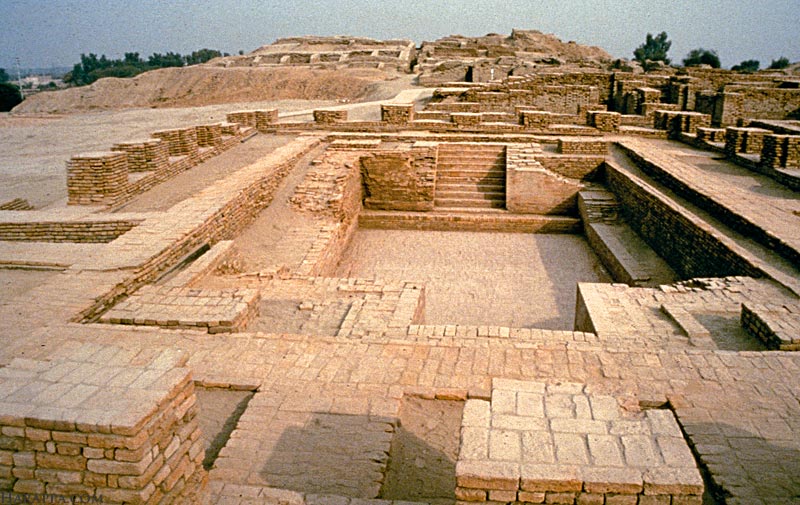
Mohenjo Daro, also known as the lost city of Mohenjo Daro, is one of the famous historical sites in Pakistan. For many years, archeologists and historians have shown their interest in studying the people who lived in Indus valley. It would be safe to say that they have collected quite exciting data on it. Besides, it is always fascinating to learn about other people and their lifestyles—especially when looking for exciting and fun facts. If you are looking forward to being a historian someday or you are the one who enjoys every minute of your history class, this article is for you. Today, we will talk about the Mohenjo Daro history in an exciting way. So, are you ready to get lost in the lost city of Mohenjo Daro? Let’s begin!
Some Mohenjo Daro historical Facts
An officer of the Archaeological Survey of India, R.D. Banerji, uncovered enigmatic remains of Mohenjo-Daro in 1922, one year after the discovery of the lost city of Harappa. Archaeologists began excavating and uncovering the Harappa and Mohenjodaro sites subsequently. At long last, they had discovered the largest city of long-forgotten Indus Valley civilization.
As for the Mohenjodaro, it is a collection of mounds and ruins on the Indus River’s right bank in northern Sindh province, Pakistan. It’s about 50 miles (80 kilometers) southwest of Sukkur, on the flat Indus alluvial plain. The site features the ruins of one of two major Indus civilization centers (c. 2500–1700 BCE), Harappa, about 400 miles (640 km) northwest of here in Pakistan’s Punjab state.
Interesting things to know about Mohenjo Daro history
City of Dead
The name of the city has been lost to time, but locals of the surrounding area refer to it as Mohenjo Daro – the City of the Dead — centuries later. Residents of this metropolitan commercial area have come a long way from their pastoral existence 500–1,000 years ago. Other rivers exist, but the Sindh River is the source of all life. This city will go down in history with Mesopotamia, Egypt, and China.
Great Bath of Mohenjodaro
During its time, Mohenjo-Daro was one of the world’s largest and most advanced cities. The city had a complicated water management system, complete with sophisticated drainage. Also, covered sewer systems and bathtubs in practically every residence. It was laid out in a rectilinear grid and built out of baked bricks.

The Great Bath of Mohenjodaro is a waterproof pool. They used it for ritual bathing. Furthermore, the baked brick walls set on top of a mound of soil are surrounding it. Harappans prioritized cleanliness, as evidenced by this bathing pool (and another at Dholavira). There are even small changing rooms encircling the Great Bath, each with its own bath space!
A treasure trove of pottery
After the discovery of Mohenjo-Daro in 1922, major Excavations began in 1965. Archeologists uncovered a treasure trove of pottery, seals, and other artifacts, pointing to craft technology, trade, and economic progress. Evidence shows that the city was dominated by trade and religion as they did not find any trace of fighting or conquests. The kings could have been merchants, landowners, or religious leaders.
Urban planning and development of the town
The archeologists discovered standardized weights and measures used to enable trade and urban planning.
Further, they shared these features with other Indus-Sarasvati Valley sites (most notably Harappa). It all points to a highly established civilization.
Moreover, the urban planning and architecture of the site mesmerized thousands of architects and archaeologists. The 5,000-year-old metropolis could house 40,000 people. It had a careful road layout with rectilinear buildings and channeled sanitization. They also found a massive well that served as a public pool to bathe in, a ‘Great Granary.’ And many other incredible architectural innovations.
No sign of warfare
There are over 1,500 Indus Valley Civilisation sites, but no evidence of combat or weapons has been discovered. It suggests that the Indus people were peaceful by nature, making them vulnerable to outside invasion.
Mysterious Massacre of Mohenjodaro
Excavations in Mohenjodaro’s streets discovered 44 scattered skeletons splayed on the streets. It seemed as if death had arrived so abruptly that they couldn’t even go to their homes. They discovered skeletons, including a father, mother, and child still holding hands, crushed to the ground. Archaeologists confirmed that these people died due to violence because they found them in contorted postures in the streets. They were buried behind rubble, ash, and debris layers. However, the source of the violence is still unknown.
Other Reasons for the Destruction
Climate change-induced droughts were more likely due to a river drying up and a break in the monsoon. It then resulted in the city’s abandonment and migration to the west. Other evidence suggests that humans survived even after the climate shifted. Because they adjusted agricultural patterns, planting wheat and barley during high monsoons and millet and rice during the falling phase. As a result, they did not require vast storage spaces anymore. Thus, adopted smaller home-based crop processing and storage systems, resulting in de-urbanization.
Bottom line
Isn’t it all fascinating to know that there was a civilization that existed before us? And somehow they were more advance in living a modern life back than we are now? Right now, Pakistan is responsible for this UNESCO heritage site. If our authorities could pay attention, this historical site can invite more archeologists, historians, and tourists. They can dig deeper for more interesting facts.
It is not just the Mohenjo Daro history, but overall, Pakistan is rich when it comes to fascinating historical sites. All we need is to keep digging more so that the discovery of such places never ends. If you want to know more about history, do not forget to read other articles.
